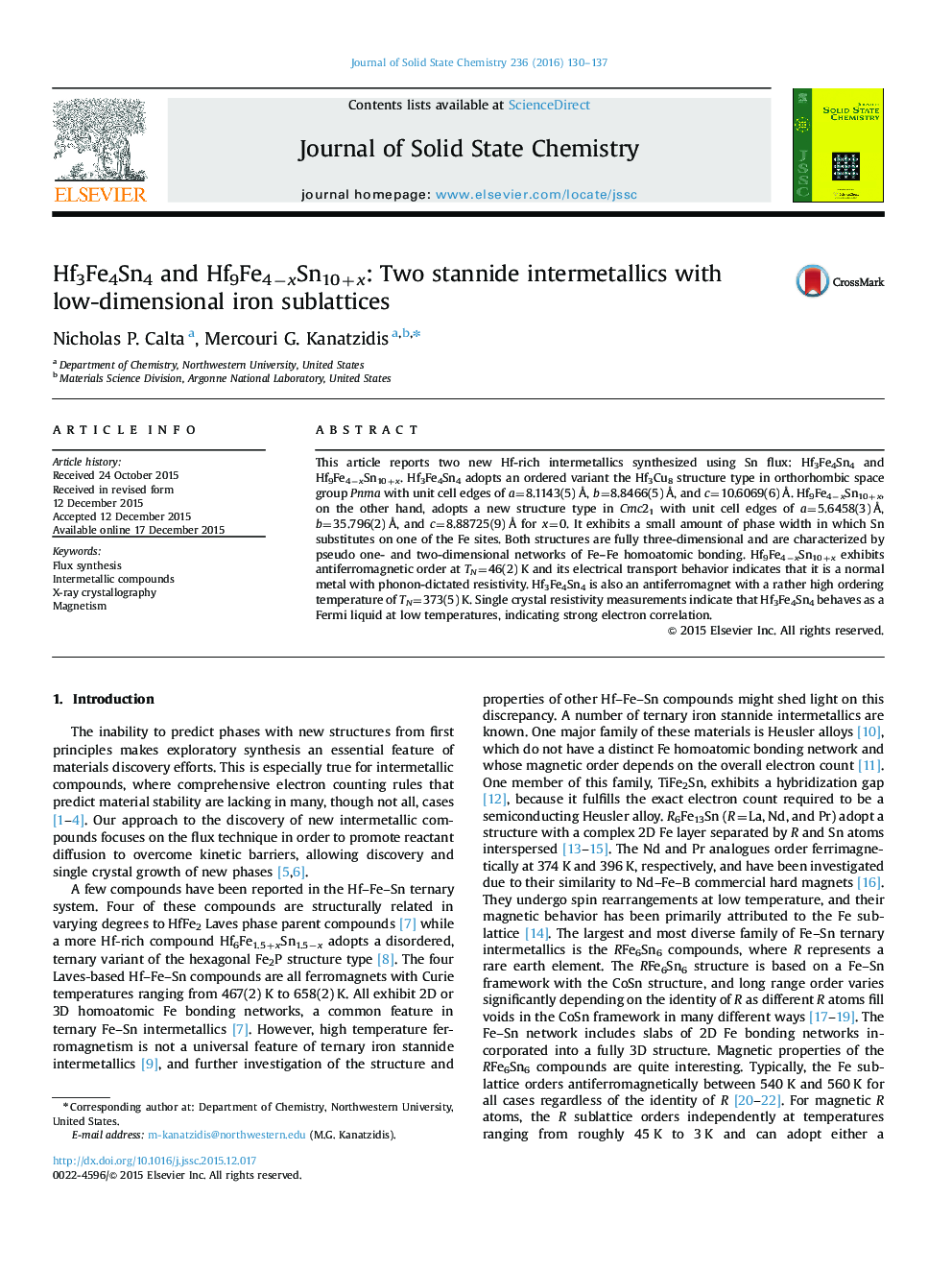| Article ID | Journal | Published Year | Pages | File Type |
|---|---|---|---|---|
| 1328906 | Journal of Solid State Chemistry | 2016 | 8 Pages |
•Single crystals of both Hf3Fe4Sn4 and Hf9Fe4−xSn10+x were grown using Sn flux.•The crystal structures were determined using single crystal X-ray diffraction.•The Fe moments in Hf3Fe4Sn4 display AFM order below TN=373 K.•The Fe moments in Hf9Fe4−xSn10+x display AFM order below TN=46 K.
This article reports two new Hf-rich intermetallics synthesized using Sn flux: Hf3Fe4Sn4 and Hf9Fe4−xSn10+x. Hf3Fe4Sn4 adopts an ordered variant the Hf3Cu8 structure type in orthorhombic space group Pnma with unit cell edges of a=8.1143(5) Å, b=8.8466(5) Å, and c=10.6069(6) Å. Hf9Fe4−xSn10+x, on the other hand, adopts a new structure type in Cmc21 with unit cell edges of a=5.6458(3) Å, b=35.796(2) Å, and c=8.88725(9) Å for x=0. It exhibits a small amount of phase width in which Sn substitutes on one of the Fe sites. Both structures are fully three-dimensional and are characterized by pseudo one- and two-dimensional networks of Fe–Fe homoatomic bonding. Hf9Fe4−xSn10+x exhibits antiferromagnetic order at TN=46(2) K and its electrical transport behavior indicates that it is a normal metal with phonon-dictated resistivity. Hf3Fe4Sn4 is also an antiferromagnet with a rather high ordering temperature of TN=373(5) K. Single crystal resistivity measurements indicate that Hf3Fe4Sn4 behaves as a Fermi liquid at low temperatures, indicating strong electron correlation.
Graphical abstractSlightly different growth conditions in Sn flux produce two new intermetallic compounds: Hf3Fe4Sn4 and Hf9Fe4−xSn10+x.Figure optionsDownload full-size imageDownload as PowerPoint slide
